Layer-by-Layer Assembled Nano-Composite Multilayer Gas Barrier Film Manufactured with Stretchable Substrate
Abstract
:1. Introduction
2. Materials and Methods
3. Results
3.1. Preparing Stretchable Substrate
3.2. Analysis Using Zeta Potential and Stretchable Gas Barrier Film Fabrication
3.3. Analysis Using FTIR and SEM
3.4. WVTR and Light Transmittance of Stretchable Gas Barreir Film
4. Discussion
Author Contributions
Funding
Institutional Review Board Statement
Informed Consent Statement
Conflicts of Interest
References
- Rogers, J.A.; Someya, T.; Huang, Y. Materials and mechanics for stretchable electronics. Science 2010, 327, 1603–1607. [Google Scholar] [CrossRef] [PubMed] [Green Version]
- Kim, D.H.; Ghaffari, R.; Lu, N.; Rogers, J.A. Flexible and Stretchable Electronics for Biointegrated Devices. Annu. Rev. Biomed. Eng. 2012, 14, 113–128. [Google Scholar] [CrossRef] [PubMed] [Green Version]
- Ramuz, M.; Tee, B.C.-K.; Tok, J.B.-H.; Bao, Z. Transparent, optical, pressure-sensitive artificial skin for large-area stretchable electronics. Adv. Mater. 2012, 24, 3223–3227. [Google Scholar] [CrossRef] [PubMed]
- Choi, J.H.; Kim, Y.M.; Park, Y.W.; Park, T.H.; Jeong, J.W.; Choi, H.J.; Song, E.H.; Lee, J.W.; Kim, C.H.; Ju, B.K. Highly conformal SiO2/Al2O3 nanolaminate gas-diffusion barriers for large-area flexible electronics applications. Nanotechnology 2010, 21, 475203. [Google Scholar] [CrossRef]
- Hong, J.S.; Kwon, H.-J.; Kim, N.H.; Ye, H.Q.; Baek, Y.H.; Park, C.E.; Choe, G.O.; An, T.K.; Kim, J.Y.; Kim, S.H. Solution-Processed Flexible Gas Barrier Films for Organic Field-Effect Transistors. Macromol. Res. 2020, 28, 782–788. [Google Scholar] [CrossRef]
- Kim, T.W.; Yan, M.; Erlat, A.G.; McConnelee, P.A.; Pellow, M.; Deluca, J.; Feist, T.P.; Duggal, A.R.; Schaepkens, M. Transparent hybrid inorganic/organic barrier coatings for plastic organic light-emitting diode substrates. J. Vac. Sci. Technol. A 2005, 23, 971–978. [Google Scholar] [CrossRef]
- Meyer, J.; Schmidt, H.; Kowalsky, W.; Riedl, T.; Kahn, A. The origin of low water vapor transmission rates through Al2O3/ZrO2 nanolaminate gas-diffusion barriers grown by atomic layer deposition. Appl. Phys. Lett. 2010, 96, 243308. [Google Scholar] [CrossRef]
- Iwamori, S.; Gotoh, Y.; Moorthi, K. Silicon oxide gas barrier films deposited by reactive sputtering. Surf. Coat. Technol. 2003, 166, 24–30. [Google Scholar] [CrossRef]
- Xiang, F.; Parviz, D.; Givens, T.M.; Tzeng, P.; Davis, E.M.; Stafford, C.M.; Green, M.J.; Grunlan, J.C. Stiff and Transparent Multilayer Thin Films Prepared Through Hydrogen-Bonding Layer-by-Layer Assembly of Graphene and Polymer. Adv. Funct. Mater. 2016, 26, 2143–2149. [Google Scholar] [CrossRef]
- Jang, W.-S.; Rawson, I.; Grunlan, J.C. Layer-by-layer assembly of thin film oxygen barrier. Thin Solid Film. 2008, 516, 4819–4825. [Google Scholar] [CrossRef]
- Holder, K.; Priolo, M.A.; Secrist, K.E.; Greenlee, S.M.; Nolte, A.J.; Grunlan, J.C. Humidity-responsive gas barrier of hydrogen-bonded polymer–clay multilayer thin films. J. Phys. Chem. C. 2012, 116, 19851–19856. [Google Scholar] [CrossRef]
- Yang, Y.-H.; Bolling, L.; Priolo, M.A.; Grunlan, J.C. Super Gas Barrier and Selectivity of Graphene Oxide-Polymer Multilayer Thin Films. Adv. Mater. 2013, 25, 503–508. [Google Scholar] [CrossRef]
- Priolo, M.A.; Holder, K.M.; Gamboa, D.; Grunlan, J.C. Influence of Clay Concentration on the Gas Barrier of Clay–Polymer Nanobrick Wall Thin Film Assemblies. Langmuir 2011, 27, 12106–12114. [Google Scholar] [CrossRef]
- Ma, Y.; Lv, L.; Guo, Y.; Fu, Y.; Shao, Q.; Wu, T.; Guo, S.; Sun, K.; Guo, X.; Wujcik, E.K.; et al. Porous lignin based poly (acrylic acid)/organo-montmorillonite nanocomposites: Swelling behaviors and rapid removal of Pb (II) ions. Polymer 2017, 128, 12–23. [Google Scholar] [CrossRef]
- Abraham, J.; Vasu, K.S.; Williams, C.D.; Gopinadhan, K.; Su, Y.; Cherian, C.T.; Dix, J.; Prestat, E.; Haigh, S.J.; Grigorieva, I.V.; et al. Tunable sieving of ions using graphene oxide membranes. Nat. Nanotechnol. 2017, 12, 546–550. [Google Scholar] [CrossRef]
- Tseng, I.-H.; Liao, Y.-F.; Chiang, J.-C.; Tsai, M.-H. Transparent polyimide/graphene oxide nanocomposite with improved moisture barrier property. Mater. Chem. Phys. 2012, 136, 247–253. [Google Scholar] [CrossRef]
- Larson, C.; Peele, B.; Li, S.; Robinson, S.; Totaro, M.; Beccai, L.; Mazzolai, B.; Shepherd, R. Highly stretchable electroluminescent skin for optical signaling and tactile sensing. Science 2016, 351, 1071–1074. [Google Scholar] [CrossRef] [Green Version]
- Liu, H.S.; Pan, B.C.; Liou, G.S. Highly transparent AgNW/PDMS stretchable electrodes for elastomeric electrochromic devices. Nanoscale 2017, 9, 2633–2639. [Google Scholar] [CrossRef]
- You, B.S.; Kim, Y.M.; Ju, B.K.; Kim, J.W. Highly stretchable and waterproof electroluminescence device based on superstable stretchable transparent electrode. ACS Appl. Mater. Interfaces 2017, 9, 5486–5494. [Google Scholar] [CrossRef]
- Paetzold, R.; Winnacker, A.; Henseler, D.; Cesari, V.; Heuser, K. Permeation rate measurements by electrical analysis of calcium corrosion. Rev. Sci. Instrum. 2003, 74, 5147–5150. [Google Scholar] [CrossRef]
- Choi, J.H.; Kim, Y.M.; Park, Y.W.; Huh, J.W.; Ju, B.K.; Kim, I.S.; Hwang, H.N. Evaluation of gas permeation barrier properties using electrical measurements of calcium degradation. Rev. Sci. Instrum. 2007, 78, 064701. [Google Scholar] [CrossRef]
- Zhu, W.; Lu, C.-H.; Chang, F.-C.; Ku, S.-W. Supramolecular ionic strength-modulating microstructures and properties of nacre-like biomimetic nanocomposites containing high loading clay. RSC Adv. 2012, 2, 6295–6305. [Google Scholar] [CrossRef] [Green Version]
- Szabó, T.; Szeri, A.; Dékány, I. Composite graphitic nanolayers prepared by self-assembly between finely dispersed graphite oxide and a cationic polymer. Carbon 2005, 43, 87–94. [Google Scholar] [CrossRef]
- Choi, J.H.; Park, Y.W.; Park, T.H.; Song, E.H.; Lee, H.J.; Kim, H.; Shin, S.J.; Fai, V.L.C.; Ju, B.K. Plane-interface-induced lignin-based nanosheets and its reinforcing effect on styrene-butadiene rubber. Langmuir 2012, 28, 682–683. [Google Scholar] [CrossRef]
- Efimenko, K.; Wallace, W.E.; Genzer, J. Surface modification of Sylgard-184 poly (dimethyl siloxane) networks by ultraviolet and ultraviolet/ozone treatment. J. Colloid Interface Sci. 2002, 254, 306–315. [Google Scholar] [CrossRef] [PubMed]
- Yoon, J.Y.; Hong, S.Y.; Lin, Y.I.; Lee, S.J.; Zi, G.; Ha, J.S. Design and fabrication of novel stretchable device arrays on a deformable polymer substrate with embedded liquid-metal interconnections. Adv. Mater. 2014, 26, 6580–6586. [Google Scholar] [CrossRef] [PubMed]
- Chang, T.H.; Li, K.; Yang, H.; Chen, P.Y. Multifunctionality and Mechanical Actuation of 2D Materials for Skin-Mimicking Capabilities. Adv. Mater. 2018, 30, 1802418. [Google Scholar] [CrossRef]
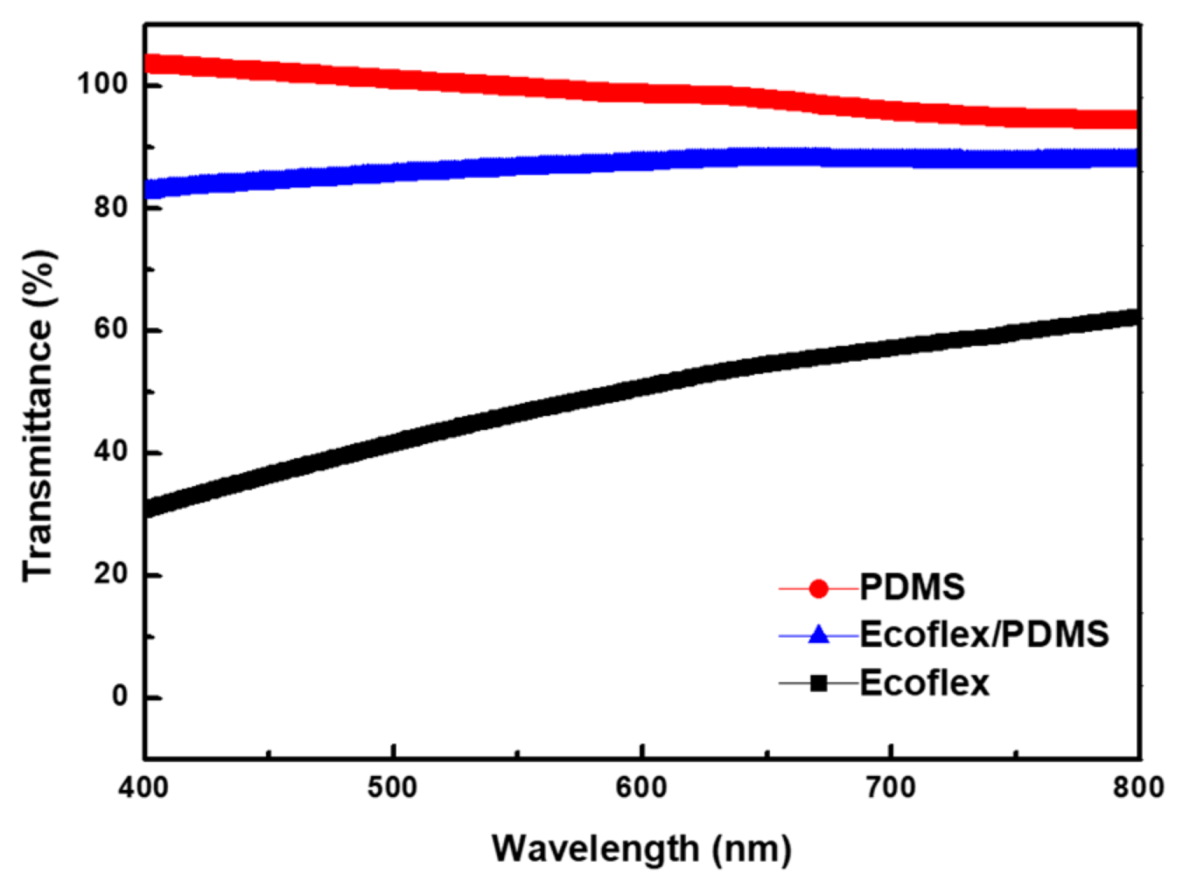
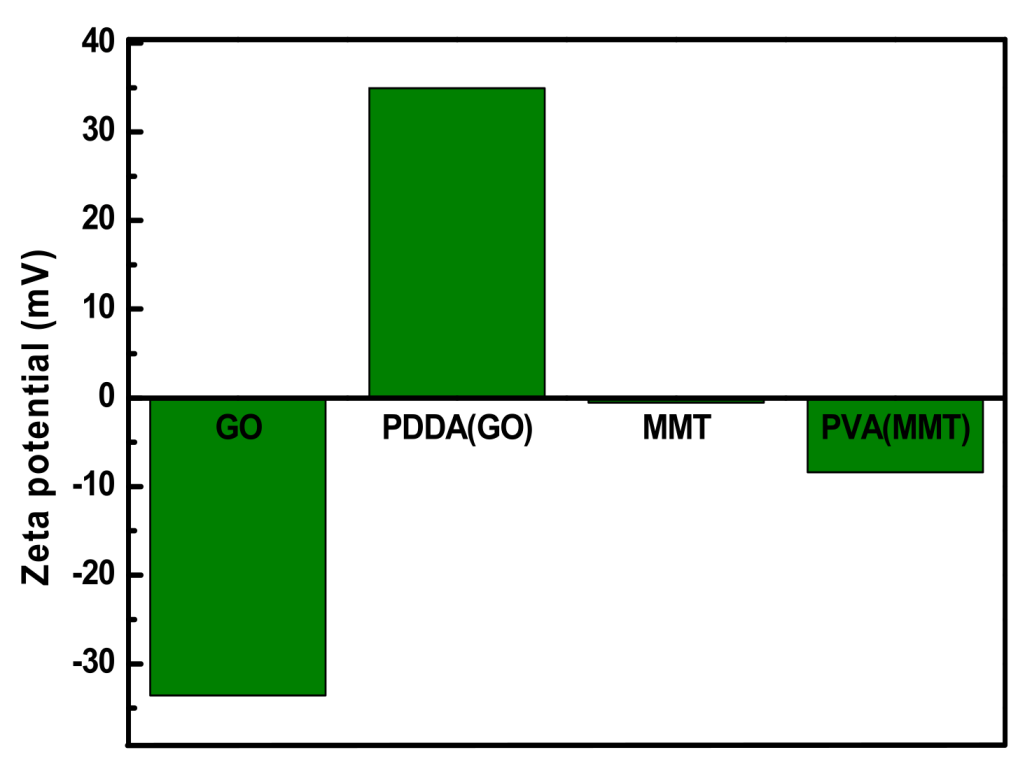




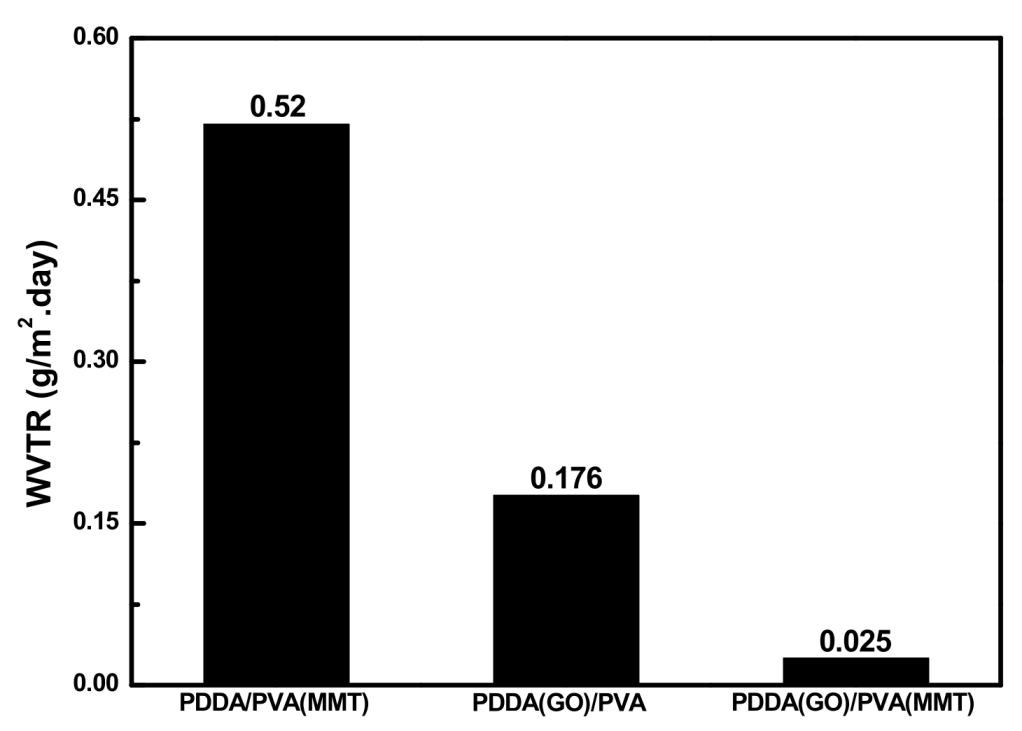
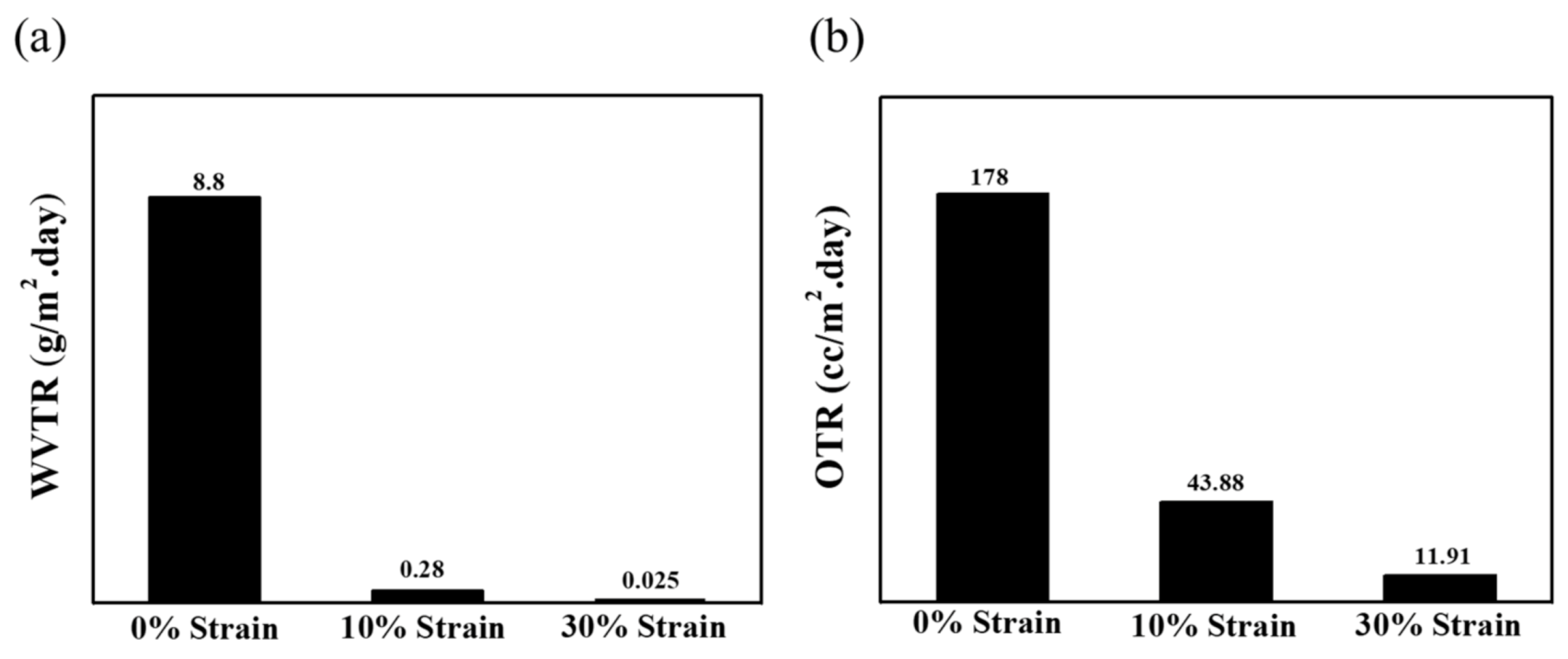
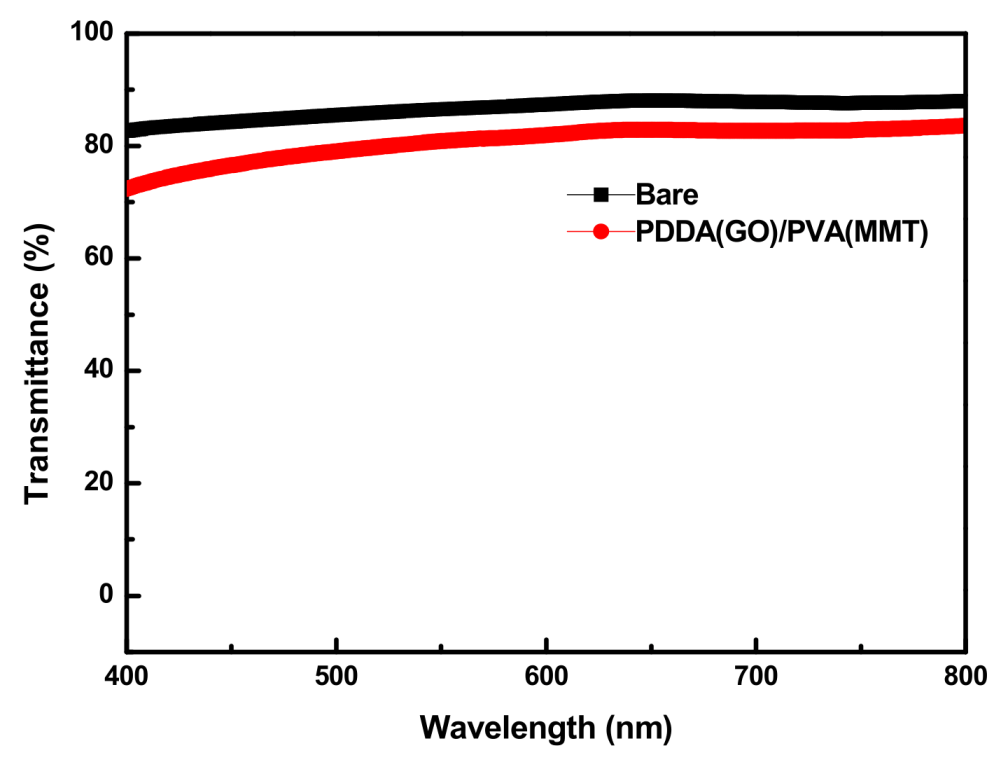
Publisher’s Note: MDPI stays neutral with regard to jurisdictional claims in published maps and institutional affiliations. |
© 2021 by the authors. Licensee MDPI, Basel, Switzerland. This article is an open access article distributed under the terms and conditions of the Creative Commons Attribution (CC BY) license (https://creativecommons.org/licenses/by/4.0/).
Share and Cite
Kim, S.; Kim, T.; Kim, D.; Ju, B.-K. Layer-by-Layer Assembled Nano-Composite Multilayer Gas Barrier Film Manufactured with Stretchable Substrate. Appl. Sci. 2021, 11, 5794. https://doi.org/10.3390/app11135794
Kim S, Kim T, Kim D, Ju B-K. Layer-by-Layer Assembled Nano-Composite Multilayer Gas Barrier Film Manufactured with Stretchable Substrate. Applied Sciences. 2021; 11(13):5794. https://doi.org/10.3390/app11135794
Chicago/Turabian StyleKim, SeJung, Tanyoung Kim, Dongsoo Kim, and Byeong-Kwon Ju. 2021. "Layer-by-Layer Assembled Nano-Composite Multilayer Gas Barrier Film Manufactured with Stretchable Substrate" Applied Sciences 11, no. 13: 5794. https://doi.org/10.3390/app11135794
APA StyleKim, S., Kim, T., Kim, D., & Ju, B.-K. (2021). Layer-by-Layer Assembled Nano-Composite Multilayer Gas Barrier Film Manufactured with Stretchable Substrate. Applied Sciences, 11(13), 5794. https://doi.org/10.3390/app11135794




